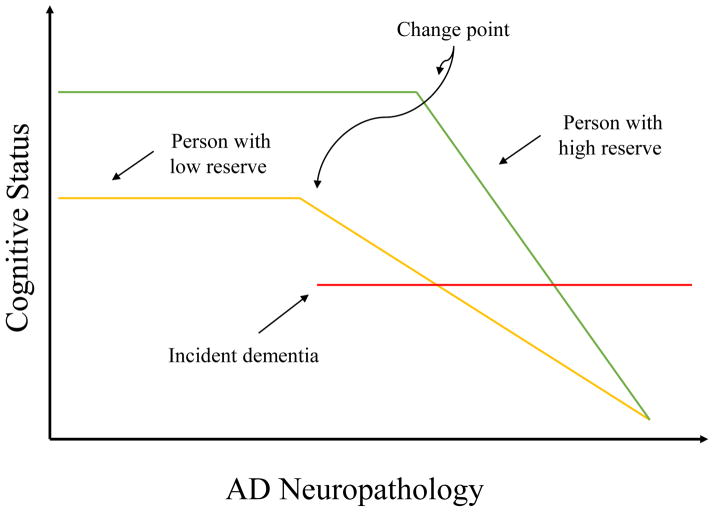Music and Cognition
While cognitive decline typically begins in early adulthood, the decline has high variance among individuals. Both structural and functional changes occur in the brain, however, it is hypothesized that the brain is able to compensate for the changes with so-called "brain reserve" and therefore the changes do not accurately predict the decline.

Representation of how cognitive reserve may mediate between AD pathology and its clinical expression based on epidemiological and imaging studies (Baroulli et al., 2013)
Dementia is defined as a major neurocognitive disorder, which includes a substantial decline in at least 1 cognitive domain. While caused by many different diseases, later life dementia is caused typically (>75%) by Alzheimer's disease (>50%) and vascular dementia. Pharmacological treatments have been found ineffective, with low efficiency and significant side effects, and the search for a different approach to dementia prevention and treatment is ongoing.
For treatment, intervention approaches include functional training by repetition, memory training, and reminiscence therapy, but results are inconclusive. Conducted meta-analysis shows that the most common treatment methods are not suitable for severe cases, and the quality of the studies is often lacking. Additionally, the results focus on the quality of life but ignore the mood and the distress of the caregiver. Due to these factors, music-based therapy is suggested as an alternative for research. While many things, including the effectiveness, are still uncertain, music excites and stimulates many areas of the brain and the related activities can be used to emphasize different domains, such as therapist-patient relationship, artistic activities, or self-regulation. The sensory stimuli seem to be helpful as a mood-modulator, for example relaxing the person or lessening the agitation and depressive symptoms.
In our scenario, we plan on using music to trigger multiple of these effects. Firstly, music will be utilized to build a repetitive structure around mealtimes and create a memorizable pattern for eating, drinking, having coffee, etc. Secondly, we will exploit the calming effects of music to create a pleasant environment for the PwD and help ease their day-to-day stress. Additionally, one active recorded music intervention will be used to ease in and out of the interactions with Nao to catch the attention of the patient without startling them.
- Barulli D, Stern Y. Efficiency, capacity, compensation, maintenance, plasticity: emerging concepts in cognitive reserve. Trends Cogn Sci. 2013;17(10):502-509. doi:10.1016/j.tics.2013.08.012